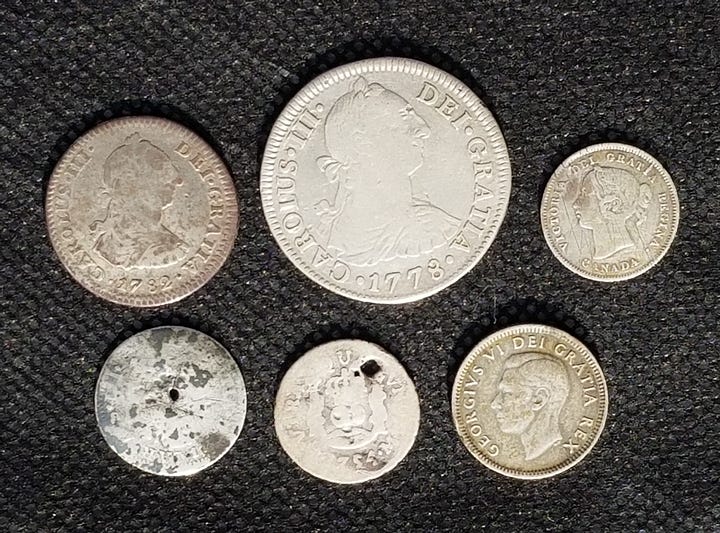
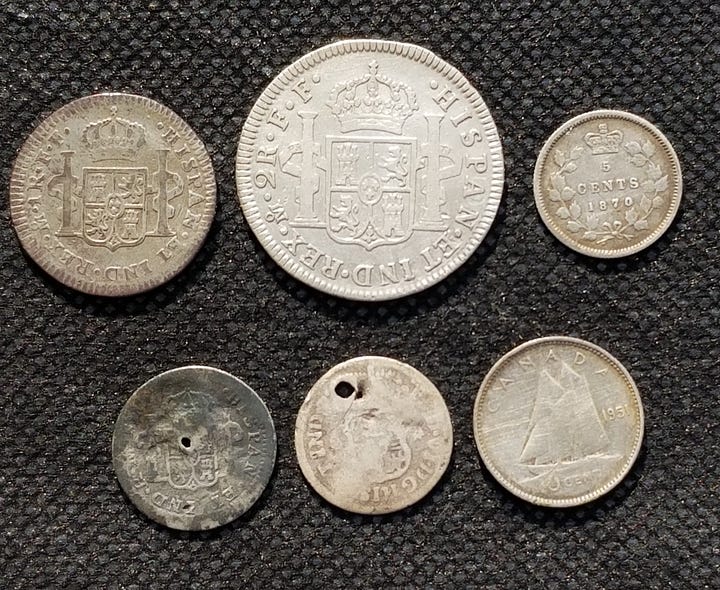
Up until 1857 any and all foreign silver coins were legal tender in the USA. Congress enacted a bill that year illegalizing the use of all foreign coins, although their use continued for decades after, especially in the rural interior of the country.
Among the most popular foreign coins in the early days of the Colonies/United States were the Spanish reale coins, which came in ½, 1, 2, 4, and 8 reale sizes. The silver dollar-sized 8 reale coins were occasionally cut into 8 pie-shaped wedges, which is where the term “pieces of eight” originated. These pie-shaped pieces were used as legal tender for many years and can still occasionally be found by detectorists.

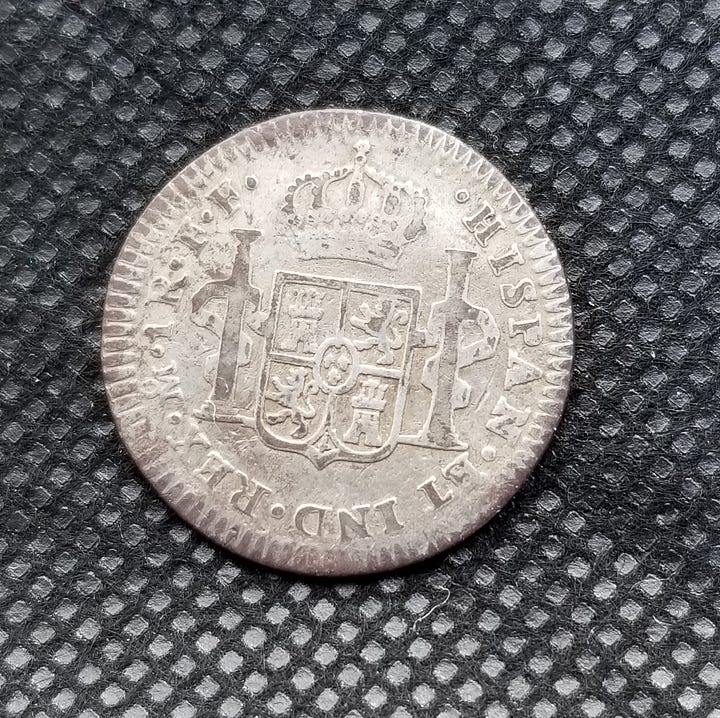
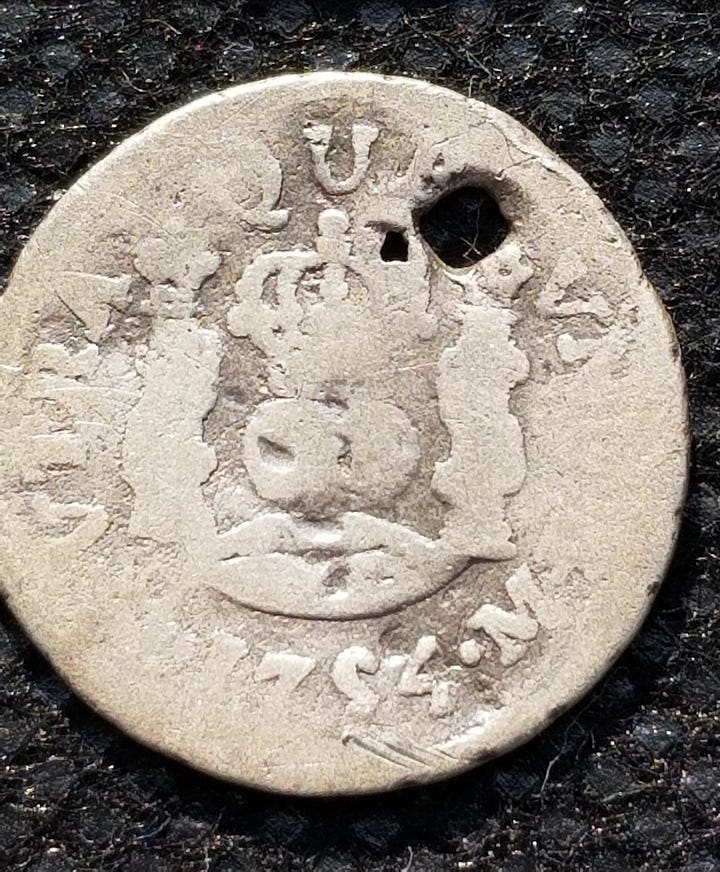
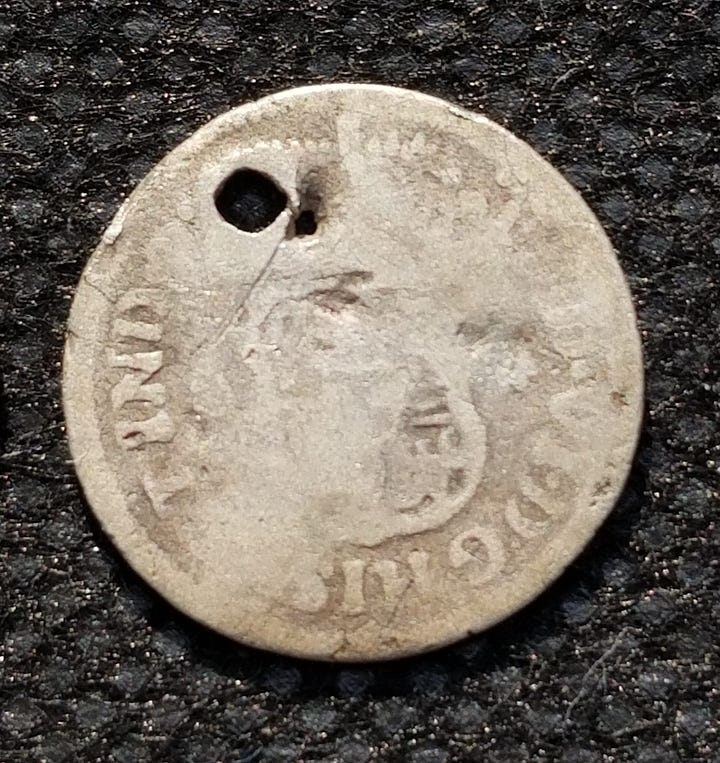
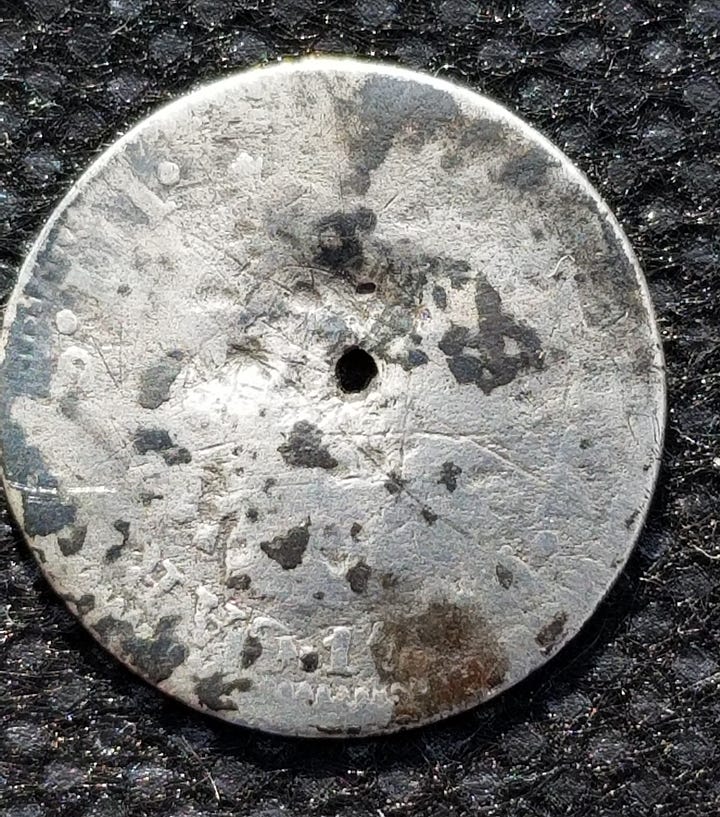
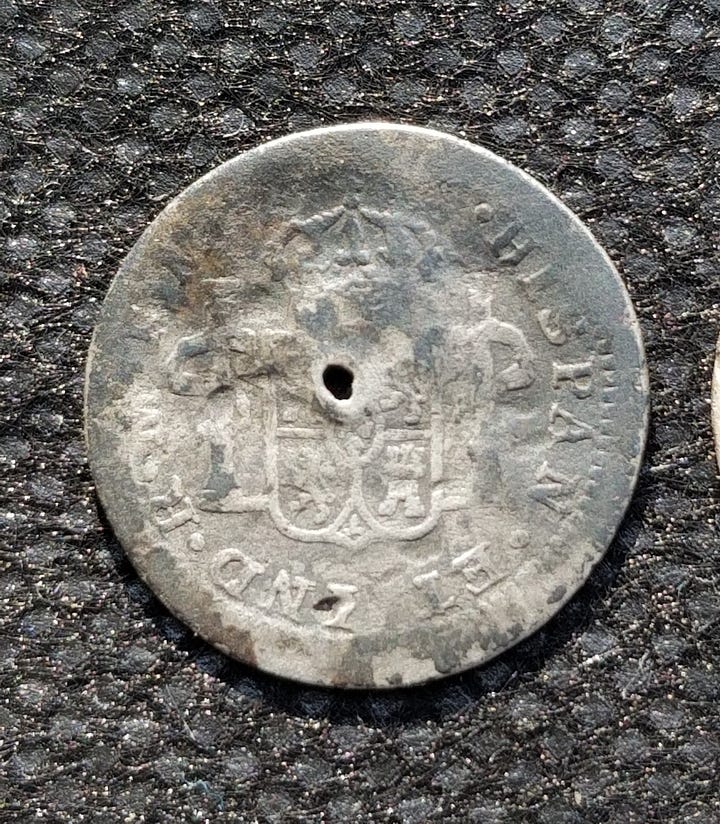
Notice the date on the top coin is 1754, which officially makes it my oldest silver coin. Unfortunately, I can’t get a date off the bottom coin. It could be older, but there’s no way of knowing. Also, note the holes in the coins. It’s my understanding that people strung these on cords and wore them around their necks to keep from losing them, which clearly didn’t work very well.
The popularity of the Spanish 8 reale (also called the Spanish dollar) throughout the Colonies led to the money of the United States being designated in dollars rather than pounds. The term “dollar” is an anglicized form of “thaler”, the name given to coins first minted in 1519 from silver mined locally in Joachimsthal, Bohemia.
The first New World mint producing reales and gold doubloons opened in Mexico City in 1536. Other mints followed in Potosi (Bolivia) and Lima (Peru). Coins minted prior to 1732 were hand struck and trimmed from crude lumps of silver called cobs. They were irregular in shape and thickness, but were the same weight and purity. I’m still waiting to find my first one of these!
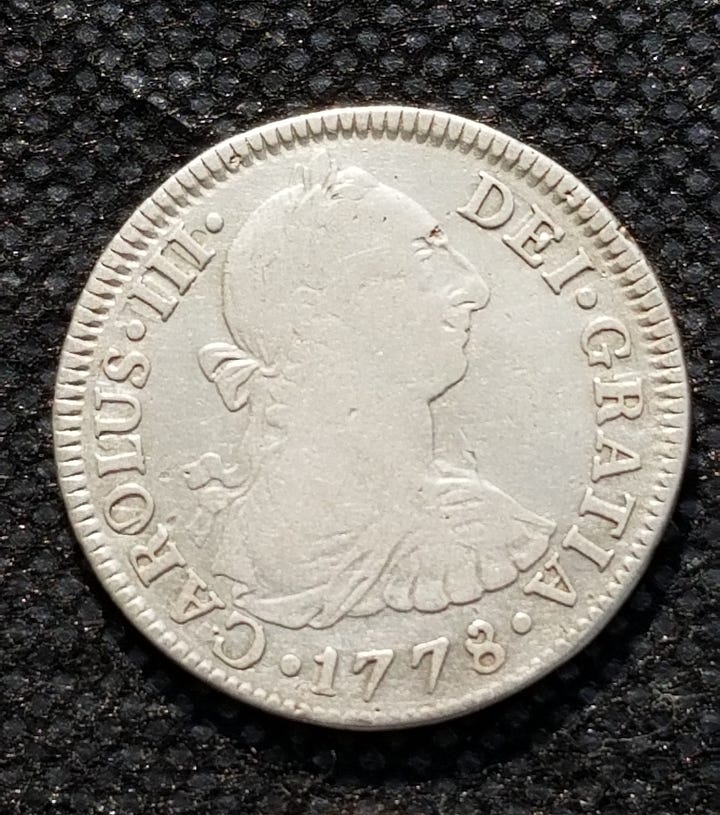

On the two reale coin (see photo above) the blue arrow points to the mint mark (M), indicating that this coin was minted in Mexico City. If it had been minted in Bolivia, it would have a P for Potosi, and if minted in Peru, it would have and L for Lima. The two red arrows point to the letters F.F., which are the assayer’s initials. The one reale coin has the same mint and assayer’s marks. Both are also marked Carlos III and Dei Gratia on the obverse.
In addition to the Spanish coins, I’ve also found two Canadian silvers, a 5-cent piece and a 10-cent piece. The US minted similar coins, and the US five-cent pieces were not called nickels because they are not made with nickel. Instead, they are called half dimes. Watch for an upcoming post with more information on this topic. These 5-cent coins were first struck in 1858 and discontinued in 1922, at which time they were replaced with the modern Canadian nickel.
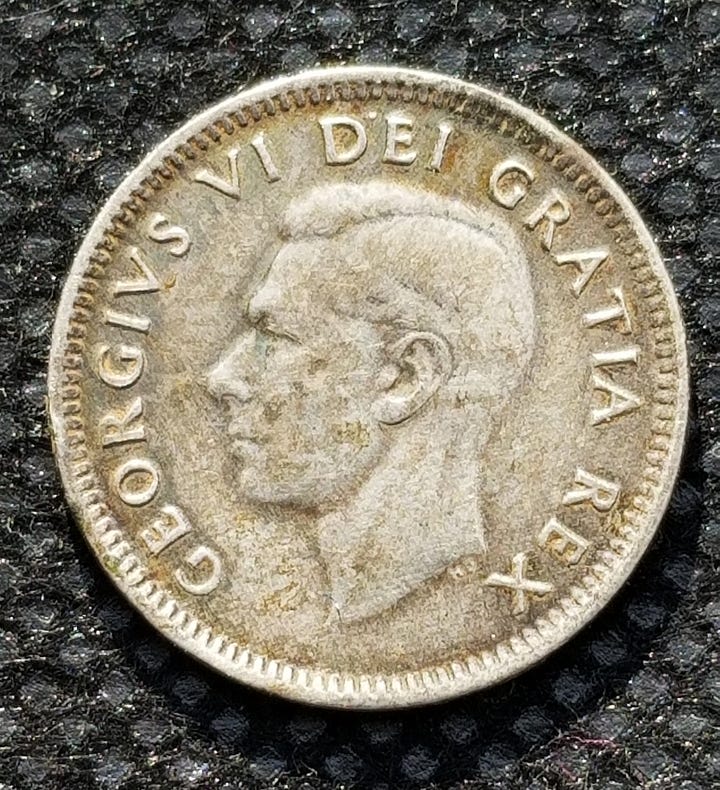
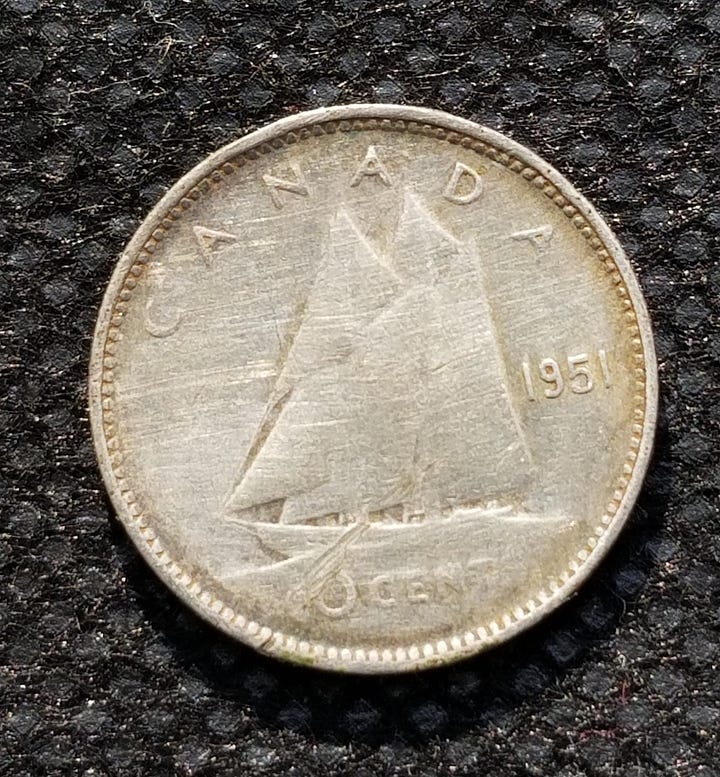
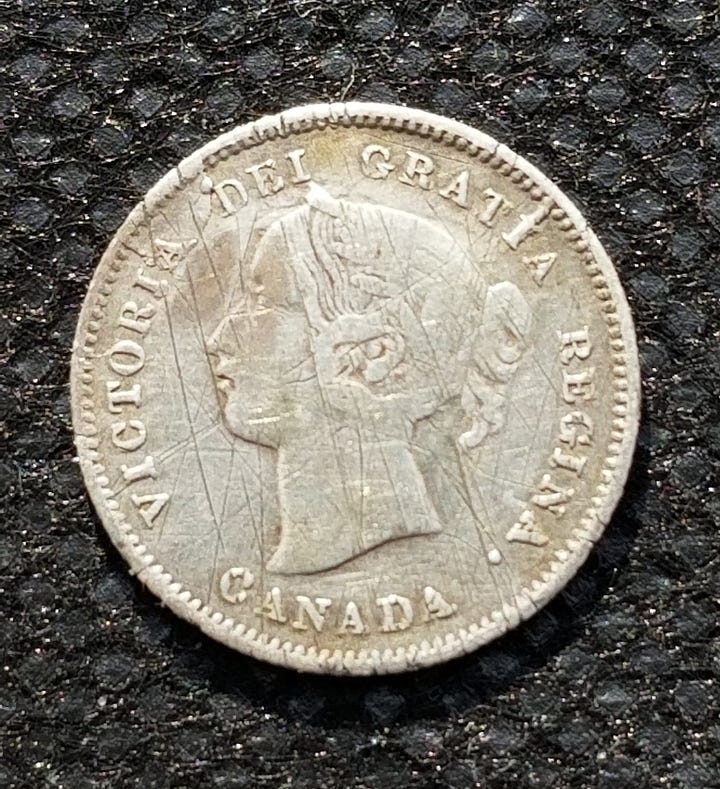
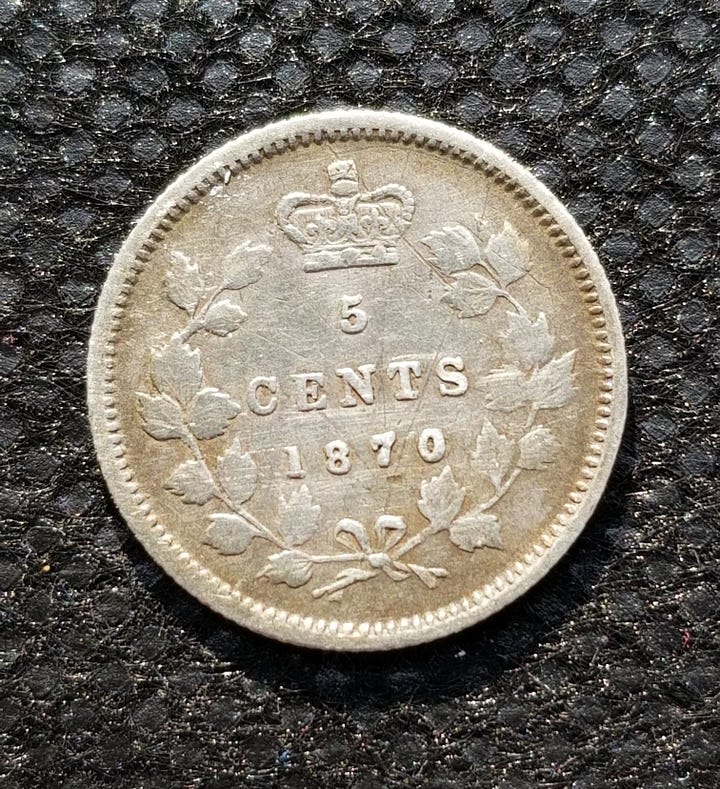
Modern Canadian coins dating from 1908 to present don’t have mint marks because they are only minted in Ottawa. Between 1858 and 1907, Canadian coins were minted in London or Birmingham (England).




This is so interesting! I never knew where the word "dollar" came from!